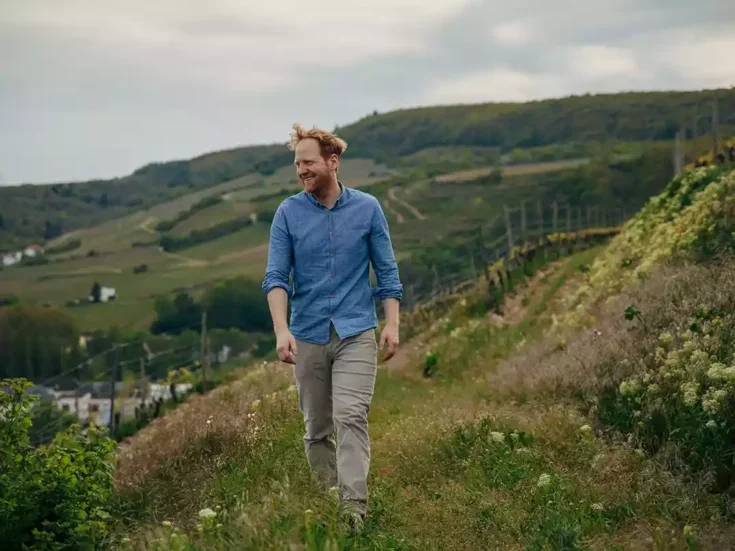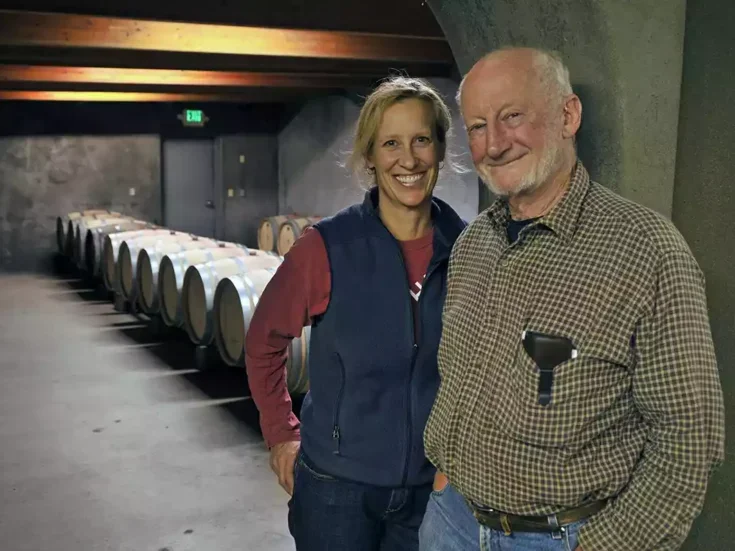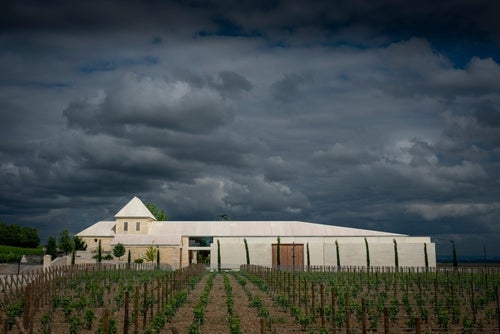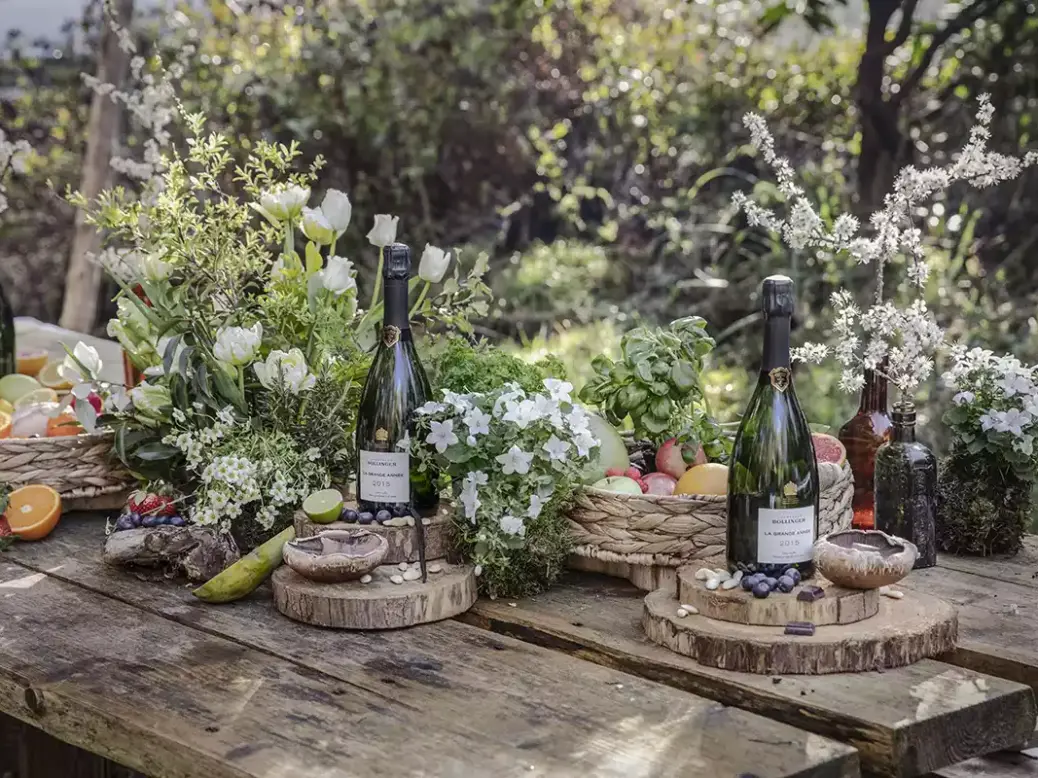
The 2015 Bollinger Grande Année, pace chef de cave Denis Bunner, “expresses more of the soul of a Bollinger Vintage than any other year. It is more opulent, more powerful, and it exalts Pinot Noir.”
Charles-Armand de Belenet, Bollinger’s managing director, is more pithy: “Ça Bollinge,” he says, evidently pleased by this new verb, as he repeats it several times over the course of the lunch. We are gathered in Paris to celebrate the launch in the Palladian grandeur of the unusually named Philanthro-Lab, a listed building in the fifth arrondissement, a location that served first as a butcher’s shop (we are in the Rue de la Boucherie, after all), then, ironically, as a medical surgery, and latterly as a carpenter’s workshop. This, it turns out, is why we are here. Bollinger’s mindset tilts toward the thematic, and this year’s theme is dominated by the subject of wood.
Fermentation in wood, Denis maintains, is fundamental to the Bollinger style. It always has been. So much so that Bollinger is the only Champagne house with its own in-house cooper, Gaël Chaunut, who offers a pre-lunch tutorial on all things sylvan. Bollinger’s barrels—4,000 in total—are mainly 228-liter Burgundian pièces, although there are a few larger vessels, each 410 liters, which Gaël describes as pipes champenoises. The revelation that the “Bollinger forest” (very grand)—110ha (272 acres) behind the village of Cuis—will henceforth contribute its own barrels, is emphasized to stress both the familial and the terroir-driven inclinations of the house. It also ties in with its sustainability agenda—a stand-alone initiative for sure, but also one prompted by the rigorous stipulations set out to ensure the receipt (not yet secured) of the new English monarch’s Royal Warrant.
Bollinger Grande Année: Generosity without excess
What, then, is the link between the focus on wood and the 2015 vintage, and how does it all chime with the Ça Bollinge coda? Here things get interesting, since one might have thought that the preternatural heat of 2015 (a drought year), allied to the power afforded by an emphasis on oak élevage, would be, at the very least, problematic in terms of fashioning and then preserving a Champagne fit to resonate with all of today’s buzzwords—namely, freshness, tension, and elegance. Not at all, we are told. The wine, as rehearsed above, may be “opulent and powerful,” but, almost counterintuitively, it is the wood that has informed and maintained its structural equilibrium. Its protective impulse, Charles-Armand advises, has spared the wine from some of 2015’s more significant challenges—in particular, a disagreeable vegetal tarnish, especially evident at the back of the palate, that has touched many of the other vintage wines from this tricky year.
Denis admits that “you can taste the sunshine, and this is enhanced by the wood,” but he also reveals that everything behind this axiom has been pivoted away from excess. Therefore, the Chardonnay quota, at 40%, is higher than usual (30% is the norm), with, significantly, fruit sourced from the cooler villages of Avize and Chouilly, rather than, say, Oger or Cramant. Therefore, even more significantly, primacy is afforded to the north-facing villages of the Montagne de Reims, with modish Verzenay, bastion of chalky purity, contributing here an impressive 26% of the final assemblage. Furthermore (“hot does not mean ripe,” we are told), the harvest was delayed until phenolic ripeness was assured, the final grapes brought in on September 22, which is late for such a warm year. The result? A Champagne that captures the generosity of vintage and house style alike (Charles-Armand celebrates a “creamy and generous effervescence”), and a wine that could not be more different from the cool, tensile 2014, and yet at the same time one that is harmonious and in proportion, its flavors propagated with dignity and branching out with generosity. The house style appears more measured and self-aware, especially if one thinks back to some of the more robust, oak-fueled wines of old—all the more ironic, given that the senior wines were mostly nurtured in appreciably cooler vintages. Ironic, also, in the light of today’s strapline: “Bollinger 2015 is dedicated to the forest and steeped in the spirit of the forest.” Wood is most effective when it is invisible and when one cannot see the wood for the trees.
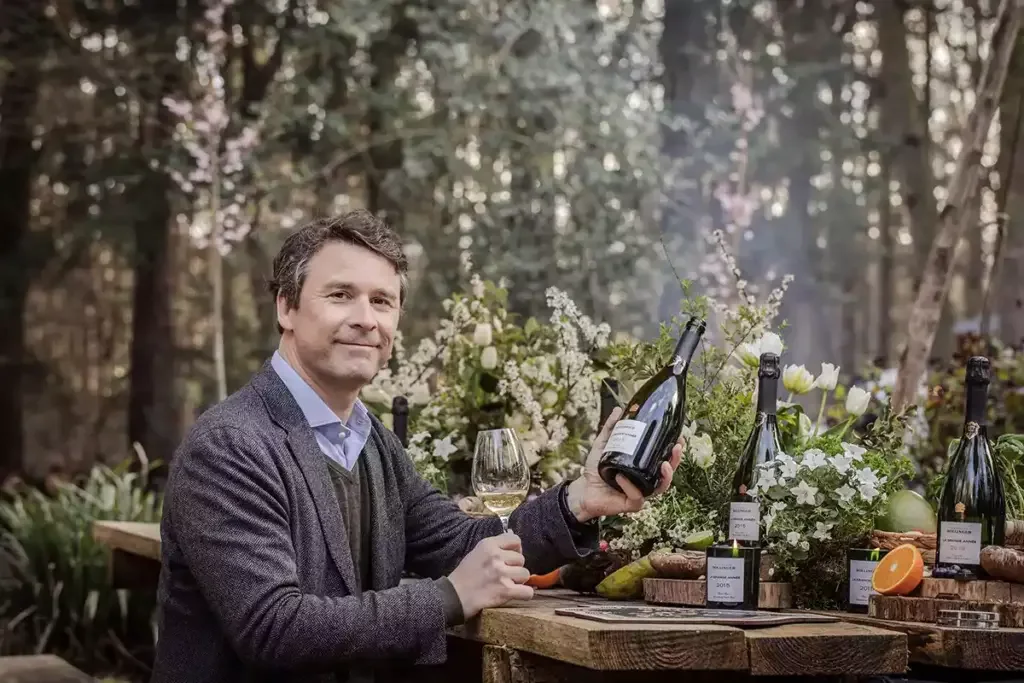
Further emphasis on today’s theme, should it have been needed, takes us into the dining room. Carcasses (human and animal) were once dissected here, but the room has now been transformed into a latter-day Forest of Arden, with a canopy of 9,000 paper leaves shrouding the table and a battalion of barrels guarding the guests. The Alsatian chef (two-Michelin-starred Olivier Nasti) is in on the act, too, with fruits of the forest punctuating his menu; there are mushrooms, nuts, red fruits, even fir oil, and, crowning it all, a youthful venison, described as the “king of the Alsatian forest.” We also enjoy Arctic char and Ossetra caviar, neither presumably sourced in the forest, and finally two superb cheeses (Tomme de Brebis and 28-month Comté), which provide the perfect foil to the older vintage on display, the 1989, served blind from Jéroboam–200 years on from “a significant event in our country’s history,” says Charles-Armand by way of a clue and providing a neat segue into a discussion of Bollinger’s imminent bicentenary in 2029. One must surmise that any further similarities between the French Revolution and the history of one of France’s most luxurious products are not for assembled inference.
An impressive launch, all in all, and an impressive brace of wines. The flamboyant Bollinger style has been preserved, but with recognition of the climatic challenges in play. The liminal step from 2014 to 2015, according to Denis, marks the start of a new era in the region, climatically speaking, and one that Bollinger seeks to embrace without in any way sacrificing the key elements that have informed the personality of its Champagne for nearly two centuries. Quite the reverse, as it transpires. Ça Bollinge, indeed!
Tasting
2015 Bollinger Grande Année
(60% Pinot Noir, 40% Chardonnay; disgorged July 2023; dosage 8g/l)
A rich declamatory gold, Rembrandt’s golden helmet. The nose is complex, with tobacco, slate, and oak-bred vanillin all vying for attention; beyond that, mirabelle plum, even a touch of mango. Generous, in other words, but far from overbearing. We try it in magnum, too, its reductive grip impressive, if slightly stern. Both, however, relish the savory gastronomic challenge, both ceding red fruits and spice in exchange for harmony. A substratum of chalk and lignin underlines the Bollinger style and anchors the wine in a richly reassuring and finely textured premonition of potential. | 94–96
2015 Bollinger Grande Année Rosé
(62% Pinot Noir, 38% Chardonnay; disgorged July 2023; dosage 7g/l)
Soft salmon pink, but not lacking for depth of pigment—this, courtesy of the 5% of red wine added from the Côte aux Enfants vineyard. A modest but telling intervention, a proportion of whole-cluster fermentation contributes phenolic prowess. Primary fruit impresses first of all, however, with raspberries, cherries, and red apples dominant, then blood orange and mandarin. Expressive but restrained, a pleasing paradox, the clasp of wood no doubt a contributory factor. With time, tobacco, quince, and even a touch of cedar wood bolster the ensemble; the players joining the stage one by one; secret harmonies foreshadowed. A longer-term wine and one of very high quality. | 93–96

